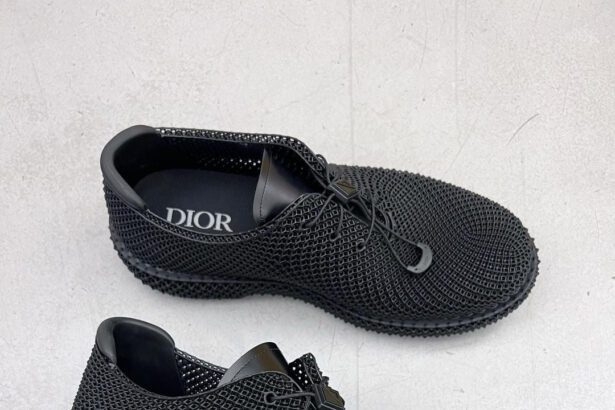Polymakr wants to change what you can 3D print with
The rapid growth of low-cost, desktop 3D printers in the past 5 years has really made 3D printing accessible to a great number of designers, engineers and DIYers. While the machines and software keep getting better, the materials available for printing have remained more or less unchanged. The low quality and limited choices of printing materials are increasingly becoming the limiting factor for the future expansion of desktop 3D printers.
As a group of materials scientists, engineers and designers who are very passionate about 3D printing, Polymakr wants to change this, by continuously developing the best the most innovative printing materials for the maker community.
Three entirely new materials for your desktop 3D printer
The goal of this KickStarter project is to bring to you 3 entirely new materials that are designed specifically for FDM/FFF based desktop 3D printers.
PolyMax PLA: Completely re-engineered PLA with superb mechanical strength
PolyMax PLA vs. Regular PLA
Poly(lactic acid) or PLA is probably the most widely used material for desktop 3D printers nowadays. However one of the largest disadvantages of PLA is its poor mechanical properties, especially the tendency to brittle fracture. This renders regular PLA limited applicability for functional parts that are used in mechanically demanding situations.
PolyMax PLA is an entirely new PLA that is designed to solve this problem. The material exhibits over 8 times better impact strength and toughness than regular PLA.

PolyMax PLA is compatible with almost all FDM-based desktop 3D printers, including many “ABS-only” printers such as MakerBot Replicator 2X (yes you are not mistaken!). It prints under identical conditions as regular PLA – so you can simply “swap and go”.
PolyMax PLA vs. ABS

How about ABS, as you may ask, since ABS is an engineering plastic that is both tough and strong? Well, PolyMax PLA outperforms ABS in terms of almost all mechanical properties, yet has the advantages of less unpleasant (even toxic) odor, less tendency to warp, and many others, as we summarize in the table below.

PolyFlex: soft and flexible filament with uncompromised printing quality
Excellent Printer Compatibility
Yes, there are already a few flexible filaments out there. However one thing we notice about those materials is their poor compatibility with different 3D printers. Many of them only work on one specific printer model or extruder type – and you have to bet on your luck that it works on the one you have. Some of them only work on 3 mm printers – to our knowledge there has not been a flexible filament that works consistently on 1.75 mm 3D printers.
Therefore we had a clear goal in mind: to develop a soft and flexible filament that is compatible with most desktop 3D printers – a material that everyone can use. That goal was achieved by carefully designing and optimizing the melt-flow properties of the material, and thoroughly testing the material on a large variety of printers. We are proud to announce that our PolyFlex is available in both 1.75 and 3 mm, and is compatible with most (if not all) desktop FDM/FFF 3D printers, including: MakerBot Replicator 2, Replicator 2X, Ultimaker (and several of its variations), RepRap Prusa Mendel, MakerGear M2, Afinia / Up! Plus , and many more as we can’t list everything here.
Fast Printing Speed
The biggest challenge with soft filaments is that they often lead to problems with feeding, as the material can be too soft to generate enough pressure. One compromise one often times has to make is slowing down the printing speed significantly. However this is almost not necessary for PolyFlex – for example our normal printing speed is in the range of 60 – 90 mm/min. Furthermore, PolyFlex requires no heated build plate and has very little tendency to warp (better than PLA and ABS).
Endless Possibilities

The soft and flexible nature of PolyFlex offers a new dimension of what one can do with desktop 3D printers. We showed a couple examples in our video, but you can do much more with PolyFlex: toys, seals, prosthetics, shoes, belts…the possibilities are really limitless. PolyFlex also features very high printing quality and gives great details. We wish you will start making with PolyFlex soon!
PolyWood: wood-like printing material with no actual wood
Wood-like appearance from its pre-foamed structure
PolyWood is a wood-mimic printing material that contains no actual wood. So, how does PolyWood acquire this wood-like appearance? Unlike any other 3D printing filament, PolyWood has a porous microstructure, similar to natural wood. Prints made with PolyWood feature a rough surface that both looks and feels much like raw, carved wood.

As you probably are aware, there are a few commercially available wood-powder based filaments, but we think our approach is better for the following reasons:
- Wood powder (often present in large amounts) tends mess up the flow properties of the polymer melt, resulting in poor printing quality. You can check out the comparison in the photo below – the difference is quite dramatic!
- What’s worse, poorly dispersed wood powder can even jam the extruder on your printer, which will never happen for PolyWood.

The first 3D-printable foam
As mentioned above, PolyWood has a porous structure. In other words it is a foam. In fact it is the first 3D printable foam that has ever been developed to our knowledge. We used a unique foaming technology that stabilizes the air bubbles inside the material (imagine tiny micro-balloons) – so you can maintain the porous structure during and after the printing. Besides making stuff that looks like wood carvings, you can also think about applications that utilizes its intrinsic foamy structure – heat insulation, sound insulation, anti-vibration, just to name a few.

Printing conditions
In our current version of PolyWood, the base material is PLA. We recommend slightly higher printing temperature and slower printing speed than your typical PLA printing conditions. Heated build plate is not required but use it if your printer is equipped with one.
Materials Packaging
All filaments are spooled and vacuum sealed in reusable plastic bags. You can check out the picture below for what you will expect to see when you open the box.

To sum it up – what we are offering

Where we are right now
We have finished most of our R&D work. That is, all the materials have been developed and thoroughly tested in our lab. We have also developed the manufacturing processes for PolyMax PLA and PolyFlex; the only technical work that remains to be done is to develop the manufacturing process for PolyWood, which we estimate would take another 2-3 months as the extrusion of foamed materials takes more effort, and we need to acquire some additional equipment. With everything said, we will be able to deliver PolyMax PLA and PolyFlex in reasonable quantities (1000 kg each per month) in 1-3 months, and PolyWood in about 3-5 months.
Why we need your support (and how the money will be spent)
Our project started back in mid-2012. It took us one year and a half to reach where we are right now. The intense R&D work has depleted most of our resources and we need some extra help in order to take those products to market. It has been a wonderful journey and we hope we can continue it, with your support!
This is what the money raised in this KickStarter campaign will be spent on, specifically:
- To acquire necessary manufacturing equipment so we can start producing the filaments in large quantities. We currently have one pilot line on which we have developed the manufacturing processes for PolyMax PLA and PolyFlex, but the line will not be capable to handle the manufacturing of all the 3 materials.
- To purchase raw materials in large quantities to drive the cost down – this is to ensure that we deliver to you not just the best products in terms of quality and performance, but also in terms of cost-effectiveness.
- To support our continual effort to further improve our materials.
Special thanks to KickStarter supporters
As our special thanks to all the KickStarter supporters, we will create a special page on our website to list all the supporters’ names. Additionally, those who pledge $60 or above will be given exclusive first access to any future materials that Polymakr develops in the next two years (check out what other things we are currently working on in the “What’s Up Next” section). You will be notified via email before we release the products to market so you can get them before anybody else! You will also enjoy a special, lower price, as we guarantee!
What’s Up Next
Besides the three materials we are offering in this KickStarter campaign, we are also developing a number of other new materials in our lab, including:
- Special PLA-based material optimized for support structure;
- Stimuli-responsive printing materials (imagine printing things that can change shapes when you heat them)
SUPPORT THEIR CAMPAIGN: https://www.kickstarter.com/projects/polymaker/polymakr-entirely-new-materials-for-desktop-3d-pri




